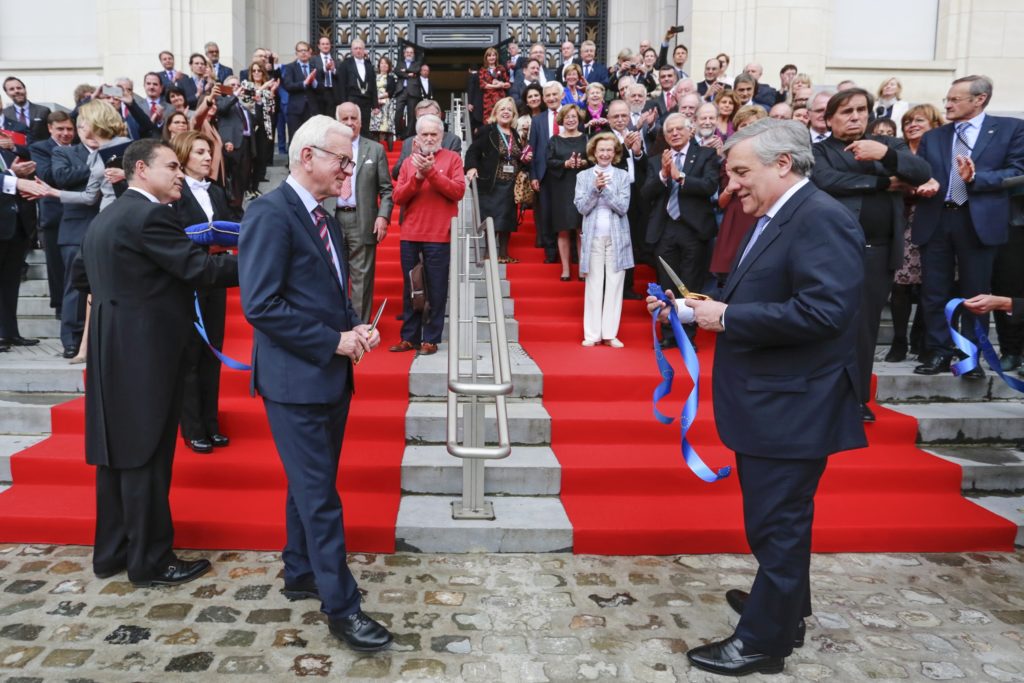The museum on Europe's memory of common historical events was officially opened yesterday in the presence of former European Parliament President Dr Hans-Gert Pöttering who came up with the idea in 2007. Pöttering is also the chair of board of trustees of the museum. It will be open to the public as of Saturday 6 May. The museum is located closed to the EU institutions in Brussels, in the Eastman building in Leopold Park, a former dental building clinic which has been totally transformed into a museum building.
"The House of European History is intended to help citizens to step into the future wisely and with confidence, a future which, from today’s standpoint, looks likely to be troubled and full of threats,” Pöttering said.
He added that, “It’s a house which, by showing us the dynamics of European history, enables us to better understand recent history, as well as the present. “
The current EP President AntonioTajani said, "This house is about the things we have in common, the events we have lived through together. This is indeed not only the House of European History, it is also the Home of European identity and European memory."
Similar museums in the EU member states have often been designed to glorify the history of the nation. This museum is different and does not portray the individual histories of Europe’s states and regions. Instead, it focuses on European phenomena, including difficult or negative events.
In doing this, the academic group which designed the museum applied three criteria: the event or idea should have originated in Europe, expanded across Europe and continue to be relevant today.
Taja Vovk van Gaal, a historian and curator from Slovenia and leader of the group which implemented the project, told The Brussels Times in an interview that the first half of the 20th century and its totalitarian regimes is one of the main themes in the permanent exhibition in the museum.
“Understanding the history of the 20th century is not easy without a context of previous periods,” van Gaal says. “We have agreed on the main phenomena and processes which have shaped contemporary Europe. The permanent exhibition will encourage the visitors to confront their own knowledge and understanding of history.”
“The first half of the 20th century could and should serve as a reminder of how easily and fast things can change from relatively good to bad and from worse to unprecedented crimes against humanity. As individuals we are responsible to react against injustices and prejudices.”
Originally intended to promote a common European identity – a concept that escapes a universally accepted definition - the museum is rather focusing on the common memory of historical events. Visitors will be challenged to critically assess European history, its potential and its future.
Exhibits in the permanent exhibition have been brought together from around 300 museums and collections from across Europe and beyond.
"Interactions: Centuries of Commerce, Combat and Creation" is the first temporary exhibition and will run until 31 May 2018. It illuminates exemplary moments and revealing stories of encounters and exchanges in European history.
House of European History web site: https://historia-europa.ep.eu/home
M. Apelblat
The Brussels Times

